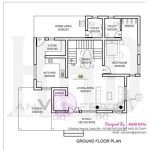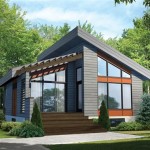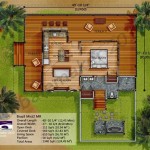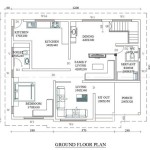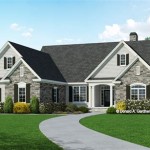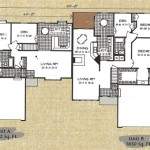Craftsman House Plans: A Timeless Architectural Style
Craftsman house plans represent a distinct architectural style characterized by handcrafted details, natural materials, and a focus on functionality. Emerging in the early 20th century as a reaction against the ornate Victorian era, the Craftsman movement emphasized simplicity, quality, and the beauty of honest craftsmanship.
The origins of the Craftsman style can be traced to the Arts and Crafts movement in England, which championed handcrafted goods over mass-produced items. This philosophy resonated with architects and designers in the United States, leading to the development of a uniquely American interpretation of the style. Key figures like Gustav Stickley, through his magazine *The Craftsman*, helped popularize the aesthetic and solidify its defining characteristics.
Several key features distinguish Craftsman house plans. Low-pitched rooflines, often with gables and deep overhanging eaves, are a hallmark of the style. Exposed rafters and decorative brackets further enhance the visual appeal of the roof structure. Wide front porches, typically supported by tapered columns or sturdy pillars, provide a welcoming space for relaxation and socializing. These porches often feature built-in seating and offer a connection to the outdoors.
The use of natural materials is another defining element of Craftsman architecture. Exterior walls are commonly clad in wood siding, shingles, or stucco. Stone and brick are also frequently incorporated, adding texture and visual interest. The emphasis on natural materials extends to the interior, where exposed beams, wood flooring, and built-in cabinetry are common features. These elements contribute to the warm and inviting atmosphere that characterizes Craftsman homes.
Craftsman house plans prioritize functionality and efficient use of space. Open floor plans encourage a sense of community and facilitate interaction between family members. Built-in features, such as bookshelves, window seats, and storage areas, maximize space utilization and reflect the emphasis on practicality. Fireplaces, often centrally located, serve as a focal point and contribute to the cozy ambiance of the home.
A variety of subtypes exist within the broader Craftsman style. Bungalows, a popular subtype, are typically one or one-and-a-half stories with a low-pitched roof and a prominent front porch. Prairie School homes, influenced by architect Frank Lloyd Wright, share some similarities with Craftsman architecture, including an emphasis on horizontal lines, low roofs, and natural materials. Four-Square houses, characterized by their boxy shape and four rooms on each floor, also incorporate some Craftsman elements.
Choosing a Craftsman house plan involves careful consideration of various factors. Lot size and orientation play a crucial role in determining the suitability of a particular plan. Lifestyle needs and preferences should also be taken into account. Families with young children may prioritize a floor plan that allows for easy supervision, while those who frequently entertain might prefer a design with a spacious kitchen and dining area.
Numerous resources are available for those seeking Craftsman house plans. Architectural firms specializing in the style can provide custom designs tailored to individual needs and preferences. Online plan databases offer a vast selection of pre-designed plans that can be modified to suit specific requirements. Working with a qualified architect or builder is essential to ensure that the chosen plan meets local building codes and regulations.
The enduring popularity of Craftsman house plans can be attributed to several factors. The timeless aesthetic appeal of the style transcends fleeting trends. The emphasis on quality craftsmanship and natural materials resonates with those who appreciate enduring value. The focus on functionality and comfortable living makes Craftsman homes well-suited to modern lifestyles. Furthermore, the inherent flexibility of the style allows for adaptation to various regional contexts and personal preferences.
Modern interpretations of Craftsman architecture often incorporate contemporary elements while staying true to the core principles of the style. Open floor plans may be expanded further to create even more spacious living areas. Energy-efficient features, such as advanced insulation and high-performance windows, can be seamlessly integrated into the design. Sustainable materials and building practices are also increasingly being incorporated into modern Craftsman homes.
The resurgence of interest in handcrafted goods and traditional building techniques has further contributed to the continued popularity of Craftsman house plans. Homeowners are increasingly seeking homes that reflect a sense of authenticity and connection to the past. The Craftsman style, with its emphasis on handcrafted details and natural materials, offers a compelling alternative to mass-produced housing.
Craftsman house plans offer a unique blend of timeless aesthetics, functional design, and enduring quality. The versatility of the style allows for adaptation to a wide range of individual needs and preferences, making it a popular choice for homeowners seeking a home that reflects both tradition and modernity.

Two Story Craftsman House Plans Home Residential Floor Plan Chef S Kitchen Open Concept

Craftsman Style Home Plans

Craftsman Style House Plan 4 Beds 5 Baths 3878 Sq Ft 927 Houseplans Com

Classic Curb Appeal Standout Craftsman House Plans Blog Dreamhomesource Com

Modern Craftsman Plan Love This Cottage House Plans Sims
:max_bytes(150000):strip_icc()/SL-1444_FCR-6feba1b011944212b854a6aabde38158.jpg?strip=all)
These One Story Craftsman House Plans Are Full Of Southern Charm

Luxury Craftsman Style House Plan 8643 Black Nugget Lodge
:max_bytes(150000):strip_icc()/SL-1873_FCP-8cf5801247c34df0b8bd839eeea78d4d.jpg?strip=all)
20 Craftsman Style House Plans We Can T Get Enough Of

Craftsman House Plans Home Floor Monster

Craftsman Style House Plans Big And Small Houseplans Blog Com


